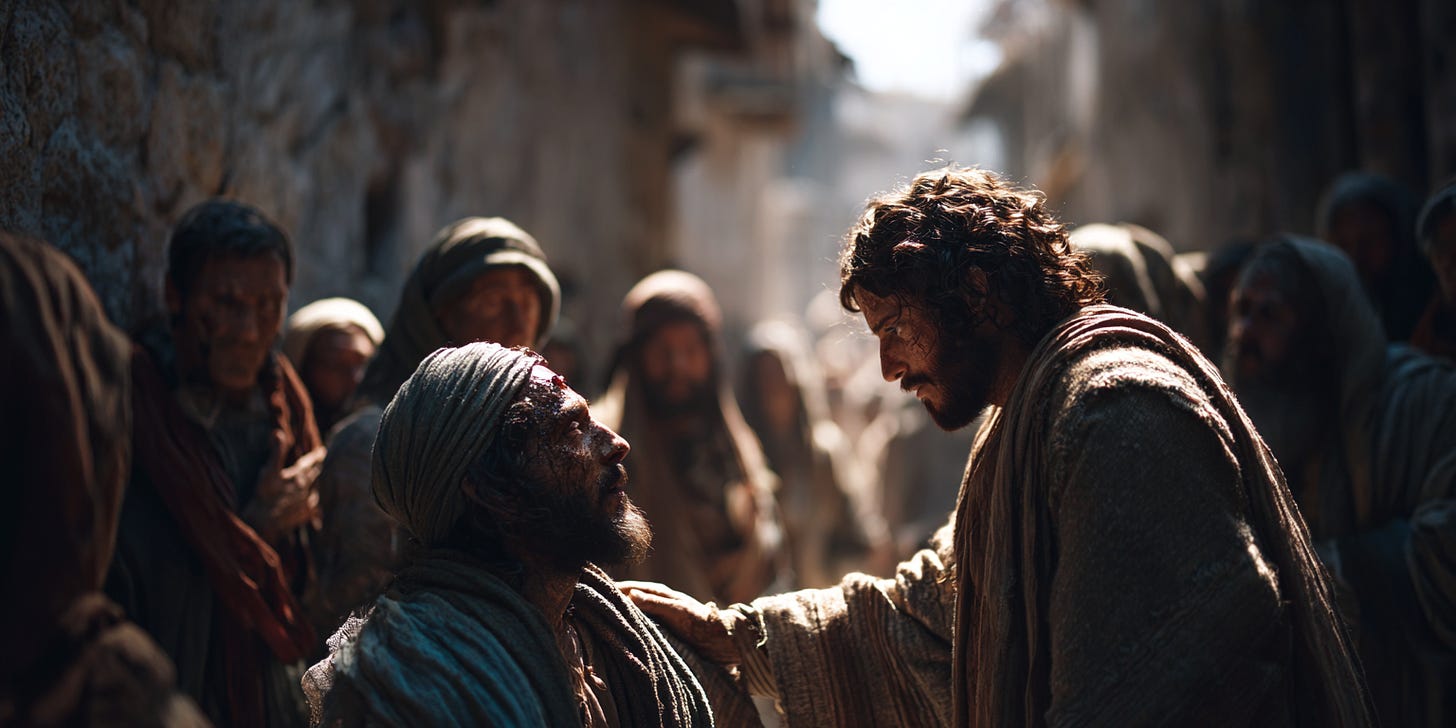Week 28: The King in Action
Demonstrating the Kingdom through Miracles and Authority
Theme:
In Matthew 8–9, the teachings of Jesus give way to vivid displays of divine authority. These miracles are more than signs; they are enactments of the Kingdom, restoring what sin has broken. Jesus touches lepers, calms storms, casts out demons, and raises the dead—revealing that the reign of God has come near in Him.
Objectives:
To recognize Jesus' miracles as manifestations of Kingdom authority.
To understand the connection between faith and healing.
To explore the compassion of Jesus toward the broken.
To reflect on the believer’s role in the ongoing mission of restoration.
Scripture Focus:
Introduction
The Sermon on the Mount paints the portrait; the miracles in Matthew 8–9 bring it to life. Jesus’ words now walk, His teachings touch the broken, and His authority disarms chaos. Each miracle is a window into the heart of God—who does not turn away from brokenness, but draws near to restore.
1. Healing the Sick, Cleansing the Unclean
Jesus heals not to prove power, but to reveal the heart of the Father. He moves toward the leper, the paralytic, and the fevered woman—not recoiling, but restoring. Healing is not transactional; it's relational—rooted in love and mercy (Matthew 8:1–17).
2. Authority over Storms and Spirits
When Jesus stills the storm or confronts demons, He reveals His mastery over creation and spiritual realms. These are not random acts—they are confrontations with chaos, with evil, and with fear. The Creator walks among His creation, subduing its rebellion (Matthew 8:23–34).
3. Faith Moves God’s Heart
Whether it’s a centurion’s humility or a bleeding woman’s desperation, faith draws power from the presence of Jesus. It’s not the magnitude of belief, but the object of it—trust placed fully in who He is that moves mountains (Matthew 8:5–13; Matthew 9:20–22).
4. Forgiving Sins and Raising the Dead
Jesus heals a paralytic by first forgiving his sins—stunning the religious leaders. He raises a dead girl, foreshadowing His own resurrection. His miracles point to the deeper healing humanity needs: reconciliation with God and victory over death (Matthew 9:1–8; Matthew 9:18–26).
5. Compassion for the Multitudes
Jesus sees the crowds not as a burden but as sheep without a shepherd. His compassion compels Him to teach, heal, and commission others. The call is not just to observe the harvest—it is to labor in it, empowered by His heart and authority (Matthew 9:35–38).
Exploring Key Themes
Miracles reveal the nature of the Kingdom: They are not mere wonders, but revelations of God’s intent to restore all things.
Faith connects us to divine power: Jesus honors those who trust Him deeply, regardless of status or background.
Jesus has authority over all realms: Physical, spiritual, and cosmic—nothing lies outside His lordship.
The mission is born of compassion: The Church is invited not just to receive but to join Jesus in His restorative work.
Reflection and Response
What does Jesus’ willingness to touch the unclean say about His nature?
Where do you need to trust Jesus’ authority in your life today?
How is faith growing or being challenged in your current season?
What role are you playing in the harvest? Are you willing to be sent?
Key Takeaways
Jesus' miracles reveal the Father's love and authority.
Faith is the key that accesses divine restoration.
The Church is commissioned to continue Jesus’ mission.
Compassion is the driving force of Kingdom ministry.
Conclusion
Jesus didn't come just to speak truth—He came to embody it. Every healing, every deliverance, every word of comfort was a declaration: the Kingdom has come near. And through Him, we are invited not only to witness miracles but to become agents of restoration in a world desperate for wholeness.


